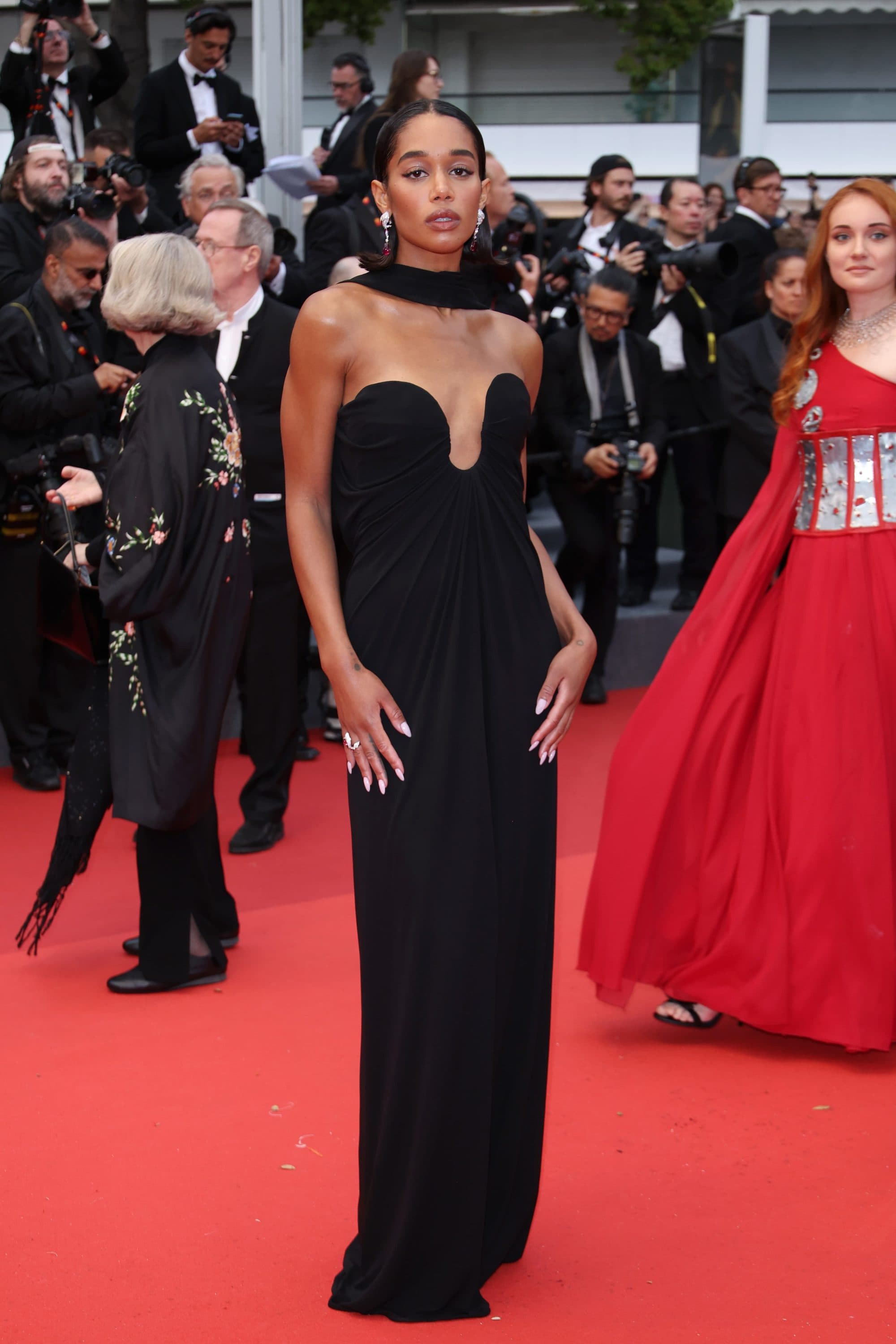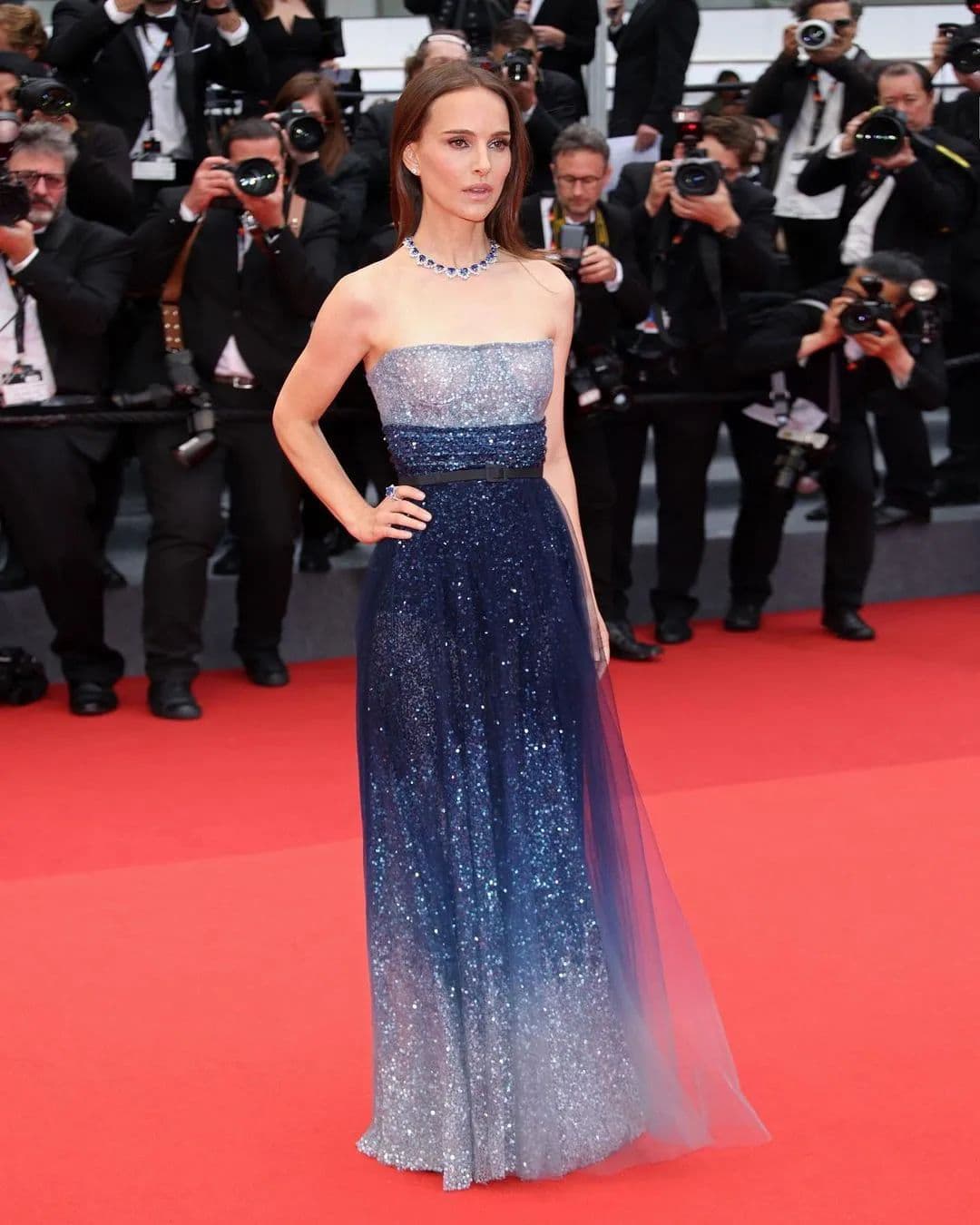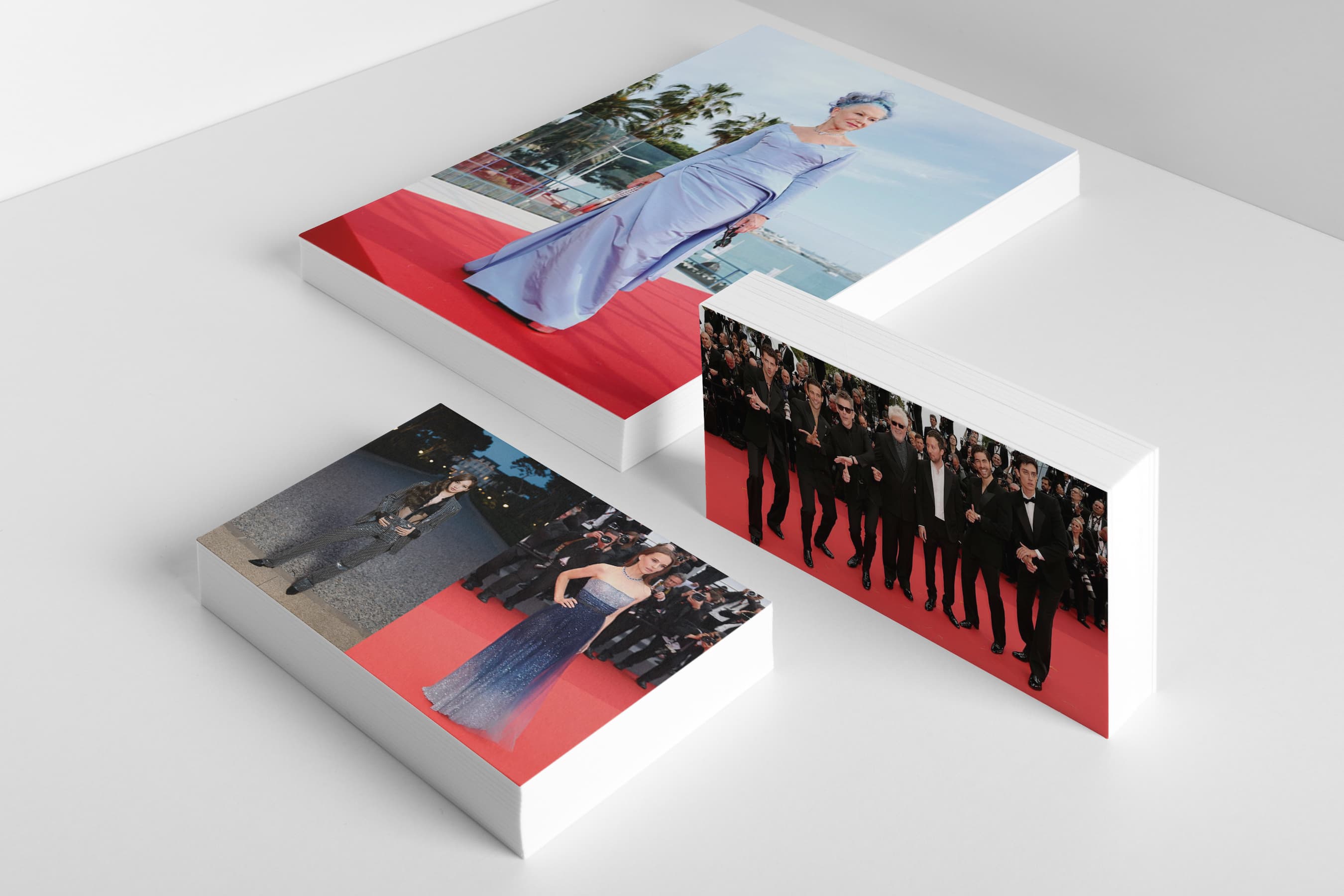Is it a Strategic Financial Move for Fashion Brands or a Pathway to Cultural Influence?
By Lizzy Bowring
From its inception in 1946, the Cannes Film Festival has been much more than just a celebration of cinema. It’s a global stage that attracts the who’s who of the film industry, the international media, and major fashion brands. The world’s most prestigious film festival, now in its 76th edition, has become an iconic platform not just for a stage for the Art of Film but for high Fashion and stars alike; it is a showcase for brands not only to tell their unique stories but a unique platform on which to capitalize on the extensive publicity and exposure. Over the years, Cannes has gifted us with memorable moments that have defined film and fashion history. Here’s how smart brands leverage this prestigious event to build their narratives and maximize their reach.
Index
- Brands as Storytellers
- From Sponsorship to Partnership
- Digital Engagement
- Film as a Medium for Branding
- Key Takeaways: The Cannes Impact
Brands as Storytellers: Brands are increasingly becoming storytellers, and Cannes offers a perfect platform.

Fashion brands have long been inherent storytellers at the Cannes Film Festival, weaving narratives through their couture that complement and often amplify the cinematic stories on the screen. These narratives are articulated through fabric, design, and detail and brought to life by the stars who wear them.
The narrative often begins with the choice of designer. Aligning a star’s persona with a fashion brand sets the stage for a story about shared values, style, and aesthetics. For instance, a young, edgy starlet might opt for a disruptive fashion brand like Balenciaga or Vetements, telling a tale of rebellious innovation. In contrast, a classic movie icon might choose a timeless Chanel or Dior ensemble, weaving a story of enduring elegance and tradition.
The clothing itself becomes a canvas for storytelling. It can convey myriad narratives – from bold, pioneering spirit in avant-garde designs to ethereal, whimsical charm. Beyond the red carpet, fashion brands continue their history by partnering with films and stars for screenings, parties, and sponsorship deals. Luxury brands like Chopard, Bulgari, and Louis Vuitton host parties and events during the festival, subtly asserting their narrative into the overall story of Cannes.
Finally, there’s the narrative of the fashion house itself. Each Brand brings its unique heritage, aesthetics, and values to the festival. For instance, Gucci’s history might be centered on Italian luxury and eccentric glamour, while Givenchy’s could be about French elegance and restrained sophistication. These narratives are inherently woven into the fabric of their designs and articulated through the stars that wear them.
Fashion brands are not just silent contributors to the spectacle of Cannes; they are active storytellers. The ensembles they showcase on the red carpet become critical elements, reflecting and shaping the discourse around style, culture, and cinema. In essence, they play a crucial role in ensuring that Cannes remains as much a celebration of Fashion as it is of film.






From Sponsorship to Partnership: Deeper connections evolve through strategic partnerships.
Traditionally, sponsorship entails a financial transaction where one party supports an event in return for advertising or promotion. But at Cannes, a deeper connection and mutual relationship have evolved into a partnership model. In these partnerships, brands engage beyond financial support and seek to co-create value. They’ve become integral to the event’s narrative, contributing to its richness and glamour.
This strategic alliance allows the event and the brand to achieve mutual goals while providing their audiences with a richer, more meaningful experience. At the same time, the collaboration with celebrities signifies a perfect blend of the film industry and luxury branding. The result is a powerful synergy that maximizes visibility and exponentially increases Earned Media Value (EMV).
EMV is exponential and, statistically, proves that social media posts are instrumental in value-added partnerships. Instagram posts that tagged fashion brands gained the most visibility, followed by jewelry, beauty, and posts from media accounts. Natalie Portman’s Dior dress garnered attention for reinterpreting a classic design from Christian Dior’s 1949 collection. The modern remake by Maria Grazia Chiuri raked in $1.1M in EMV from a single post.
Dua Lipa’s first red carpet-appearance propelled Celine to the top-ranked luxury fashion brand in EMV. The star wore a black, one-shoulder Celine gown, accessorized with diamond Tiffany & Co. earrings and a matching bracelet. Her Instagram post about the event generated $5.6M in EMV and an impressive engagement rate of 6.4%. “Celine dominated with $42.9 million in EMV, making up 67.2% of all participating fashion brands’ EMV. Their success can be attributed to working with top K-pop influencers and scoring the highest average number of posts from influencers”. (Lefty). In this context, transitioning “from sponsorship to partnership” denotes a more integrative and symbiotic relationship, enabling brands to participate more actively and create lasting impressions within the Cannes Film Festival.
Digital Engagement, the power behind brands: Social media is an indispensable tool for brands during Cannes, collaborating with influencers, celebrities and their following, and the media to create digital content that aligns with their brand narrative.

Instagram shared behind-the-scenes footage, and the use of hashtags to engage audiences worldwide helps brands extend their reach beyond the physical confines of Cannes. Brands organize events, dinners, and parties that align with their unique brand narratives during the festival. For instance, Chopard, the festival’s official partner, hosts the “Chopard Rooftop,” emphasizing its narrative of glamour and prestige in the world of luxury jewelry. According to Launchmetrics, the 2022 Cannes Film Festival earned $724.4 million in media impact value (MIV), more than the $658.6 million of the Oscars, while the Venice Film Festival trails behind with $154.1 million. At Cannes, the top 10 jewelry houses collectively coined about $70 million MIV, with most taken by Chopard, the official sponsor of the festival ($26.8 million), followed by Bulgari ($10.5 million) and Cartier ($6.6 million).
For Beauty, L’Oréal Paris, known for its active social media presence during Cannes, hosts makeup tutorials, shares beauty tips, and live-streams red carpet arrivals, allowing audiences to interact with the Brand. Launchmetrics stated in 2022, “L’Oreal ranked first at Cannes among the beauty brands bringing in a total MIV® of $14.5M across 1.8K placements related to the festival. L’Oréal’s strategy for the success of the Brand’s impactful global campaign was the core value that guaranteed their high-ranking result. When diving into the data, 60% of the total MIV® came from Instagram. By partnering with top celebrity voices from global industries, L’Oréal expanded brand awareness to new audiences and widened its overall reach. Dame Helen Mirren is a perfect example. She attended the grand opening and premiere of Jeanne du Barry with striking blue hair that perfectly matched her blue dress, carrying a fan with the #worthit in block capitals; her Insta-worthy appearance proves a reach that spreads throughout several age demographics. According to Lefty, the EMV of beauty took 20.4% of the split by verticals.

Award-winning make-up artist Felicity Bowring agrees age is no barrier. – Beauty is integral to the entire persona, particularly for a brand such as L’Oreal, which appears to have delivered several iconic makeups that showcase a woman’s beauty. Women over 40 years of age look understated yet beautiful and glamorous just by focusing on their natural beauty: Natalie Portman in Dior and her beauty supplied by Beauty Dior – #StarsinDior But also Alicia Vikander, Viola Davis, Elsa Hosk, Sabrina Elbar, Kate Beckinsale, and Jennifer Lawrence were just as beautiful, with a reach exemplified by the platforms with such handles on Instagram. Instagram has become an indispensable tool for beauty brands, enabling them to extend their reach and engage a wider demographic.



Using platforms like Instagram, Twitter, and Facebook to share behind-the-scenes glimpses, red-carpet looks, exclusive interviews, and ‘party’ snapshots, brands offer global audiences a virtual pass to the event, immersing them in the festival’s glamour while highlighting the Brand’s products and associations. A photo of a film star wearing a gown, suit, jewelry, or makeup on the red carpet can generate significant buzz, leading to widespread media coverage and public dialogue.
These critical digital strategies enable brands to measure their impact, helping them assess their strategies’ effectiveness and adjust their approach as needed. They also provide a platform for brands to expand their narratives, engage audiences, and reinforce their presence in cultural dialogue.





Film as a Medium for Branding: Brands have taken their Cannes involvement further by producing or sponsoring films. This strategy offers a creative way to weave their Brand into engaging narratives.

The festival provides a unique platform for a Brand to express its idea, allowing companies to communicate their narratives dynamically and emotively where the intersection of cinema and branding takes center stage. Luxury brand Louis Vuitton partnered with film director Léa Mysius to create a short film for the festival, providing a unique platform for the Brand to express its vision. Much like cinema, branding is, at its core, about storytelling and constructing a narrative that resonates with consumers, fostering a connection beyond the product itself.
Several companies produce short films or commercials designed to evoke an emotional response from the viewer. These brand films often have little to do with the product and are more focused on conveying the Brand’s identity and ethos. A great example is Gucci’s series of short films, “Gucci Ouverture,” showcasing their collections in a narrative-driven and artistic manner. Brands also leverage film through strategic product placements. The Brand becomes associated with the film’s characters, storyline, and overall aesthetic by appearing in a movie. James Bond films, for instance, are renowned for their placements of luxury brands, from Omega watches to Aston Martin cars. These associations provide visibility and align the Brand with the cinema’s prestige and cultural significance. Chopard’s partnership with Cannes, which designs the coveted Palme d’Or trophy, is an excellent example.


Brands increasingly create feature-length films or documentary series that subtly promote their Brand while offering compelling content. This branded content serves as a platform for brands to communicate their values and tell their stories in an emotionally resonant, visually stunning, and profoundly engaging way. At Cannes, the intersection of branding and cinema becomes particularly apparent, offering brands a global platform to articulate their narratives and connect with audiences through the powerful medium of film.
The Cannes Impact – Key Takeaway.
The marriage of Fashion and cinema at Cannes is not just about individual fashion choices; it’s about the narratives they create. Each look tells a story about the star, the fashion house, and the changing trends of the era. Over seven decades, these stories have contributed to the spectacle of the Cannes Film Festival, making it a significant event in both the film and fashion calendars. As the festival continues to evolve, the role of Fashion remains central, with the red carpet serving as a global stage for stars to make fashion statements and for brands to showcase their product. If anything, the spectacle has only increased, underscoring the inseparable bond between cinema and Fashion. And it is not just about the films that are the clear winners; it is also the brands with two weeks of festivities and a change of dress every day. Any wonder brands consider this event the highest priority and a veritable golden goose!
And so it is that just as the Cannes Film Festival can make an up-and-coming producer, an out-of-the-box film, or a new film star, it can also be integral in catapulting a fashion brand into global recognition, solidifying its status in the world of luxury and style, and forging lasting associations with the glamour and prestige of cinema and its audience.

